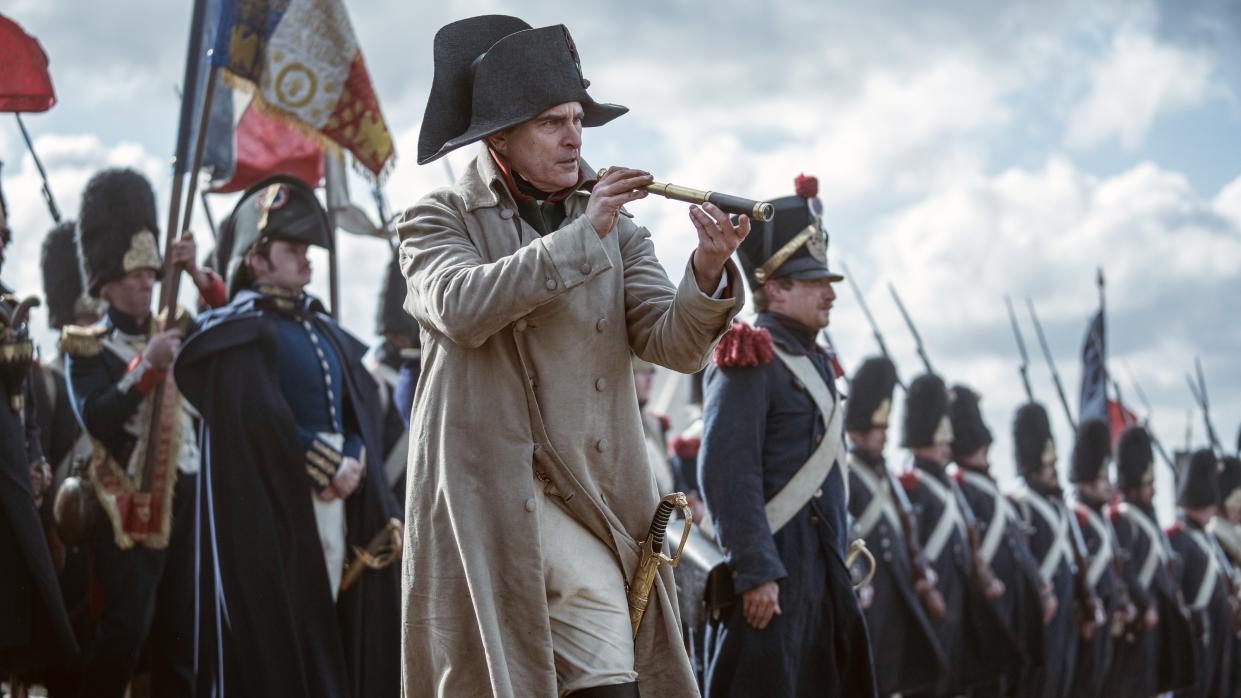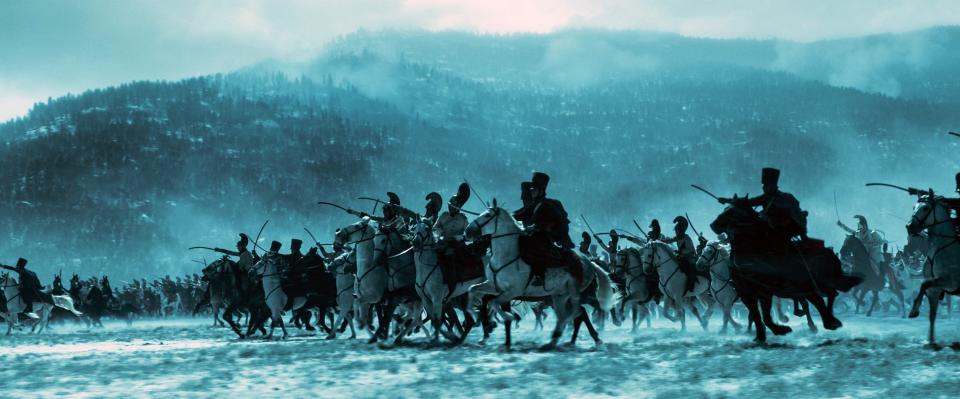Watch Before and After Footage as VFX Builds ‘Napoleon’ Battles from 500 to 50,000 Soldiers

- Oops!Something went wrong.Please try again later.
When “Napoleon” visual effects supervisor Charley Henley began planning the massive Battle of Waterloo sequence with director Ridley Scott, the initial discussions centered on the question of how to stage it like the spectacles of Hollywood past. “We wanted to get as close as possible to an old David Lean movie where there are thousands of extras and you’re doing it all live,” Henley told IndieWire. “One of the ideas was to shoot in Ireland using the Irish army, but we pretty quickly realized we couldn’t afford to do that.”
A variety of economic factors — as well as the need to strip the production down due to COVID-19 — meant that “Napoleon” would have to rely heavily on digital effects to realize Scott’s epic vision, but the core principle of doing as much as possible practically remained. “One of the key things for me was getting something real into every shot,” Henley said. In order to stage the various explosions, for example, practical effects supervisor Neil Corbould built air mortars to bury underground and blast debris and stuntmen into the sky using compressed air. Then Luc-Ewen Martin-Fenouillet, the supervisor for visual effects house MPC, worked with his team to digitally add the necessary fire and explosions.
More from IndieWire
Knowing he would not have the requisite David Lean cast of thousands, Henley ran tests to determine how many real soldiers he needed to make Waterloo convincing, ultimately deciding that a few hundred extras gave him a sweet spot from which Martin-Fenouillet could extrapolate and create 50,000 digital troops. Historical research revealed that the British army of the time used defensive squares comprised of around 500 soldiers, so one full square was photographed on set that the post-production visual effects artists used as a reference to create dozens of additional squares.
In keeping with Scott’s demand for rigorous attention to detail, Martin-Fenouillet was determined to add as much distinction as possible to the digital soldiers. “The textures, the costumes, and the props needed to be as unique as possible for each character,” he said. “Just putting them shoulder to shoulder was a huge challenge, making sure no one crashed into each other. It took a lot of fine-tuning.” The same went for multiplying the horses that were on set. “The horses in particular were very difficult,” Henley said. “When you saw 500 CG horses next to 100 real horses, you could see the slight differences in all the real horses — all their tails were waving differently, for example, but they weren’t in the CG horses. So we had to keep pushing for new levels of detail and animation to get that variety.”

One of Scott’s central ideas for the Waterloo sequence was that the weather would change, starting in the rain and ending with the sun breaking through smoke-filled skies. On set, Corbould had rain machines ready to go but didn’t end up needing them when real rain poured down on the production for several days. There were also intense winds, which Scott decided to emphasize in the visual effects by adding fluttering flags in post. “There could never be enough flags,” Martin-Fenouillet said. “We kept amping up the number.” The effects artists also added digital patches of sun passing across the battlefield and CG sky replacements and smoke simulations to maintain continuity across footage shot over the course of several days.
Some of Henley’s methods of creating reference material for Martin-Fenouillet were surprisingly low-tech, as when he created cardboard soldiers to place in the distance. “Those were immensely useful to give us a sense of depth,” Martin-Fenouillet said. Scott’s method of shooting, in which he covered the battle sequences with as many as 14 cameras, was also helpful in spite of the challenges it created. “That gave us a huge amount of extra material.” The effects artists were able to mine the hours of footage captured by Scott’s multiple cameras to create as many practical elements as possible for the frames; by not locking the filmmakers into restrictive pre-viz for the Waterloo sequence, Henley felt the battle was able to come across more organically. “We allowed a type of filming that was not as staged,” Henley said. “It was free, in a sense.”
Best of IndieWire
Where to Watch This Week's New Movies, Including 'Night Swim' and 'Good Grief'
Quentin Tarantino's Favorite Movies: 60 Films the Director Wants You to See
2023 Movies Shot on Film: From 'Oppenheimer' to 'Killers of the Flower Moon' and 'Maestro'
Sign up for Indiewire's Newsletter. For the latest news, follow us on Facebook, Twitter, and Instagram.

